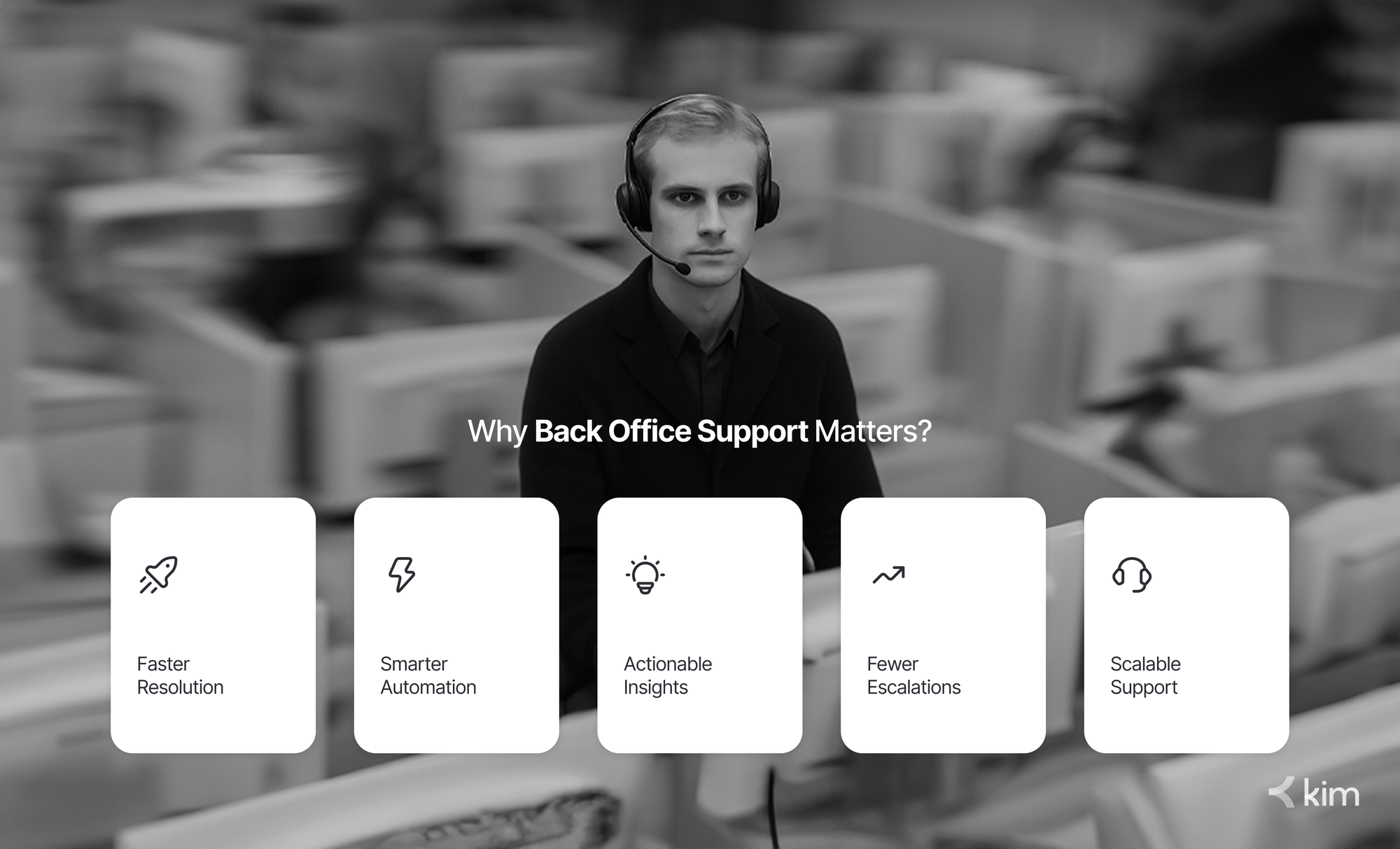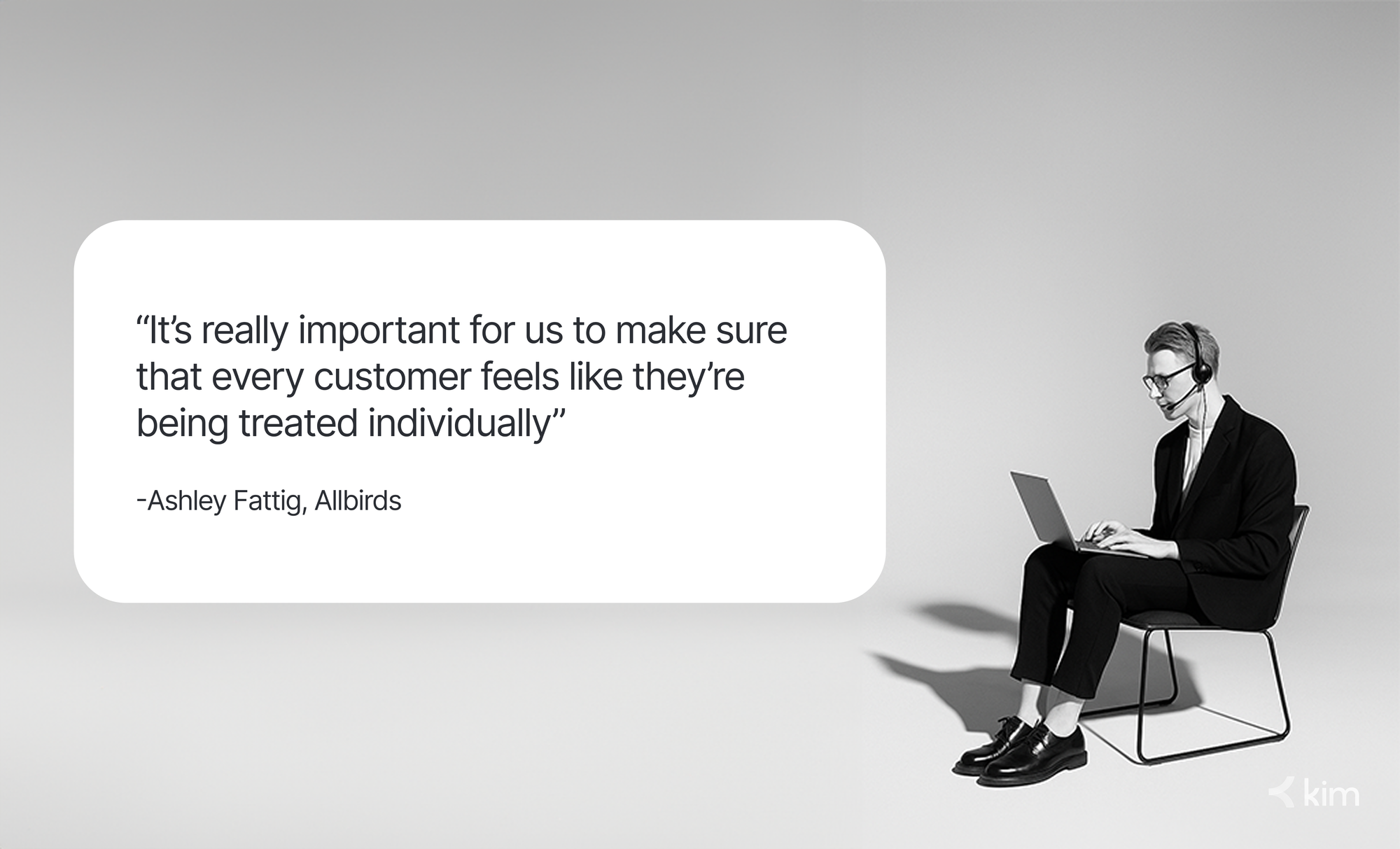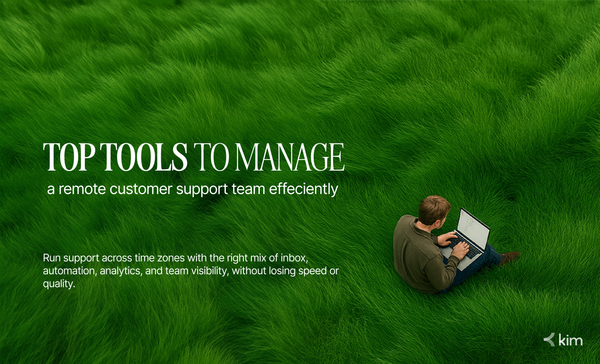Back Office Support in DTC: The Unsung Hero of Customer Experience

When you think of delivering the best customer service as a DTC brand, your mind likely jumps to fast replies, friendly chat agents, and maybe even AI handling the basics. But behind the scenes? There’s a lesser-known function quietly holding the entire customer experience together: back office support.
It doesn’t get talked about much. It’s not flashy. But it’s a game-changer.
If you’re running or scaling a DTC (direct-to-consumer) business and wondering what’s getting in the way of seamless customer service, this might be the piece you’re missing. Let’s break down why back office support is the unsung hero of great DTC customer experiences, and how the right tools, people, and workflows can transform it into your brand’s secret weapon.
TL;DR
- Great DTC customer service isn’t just about fast replies — it relies on strong back office support that actually resolves issues.
- Back office teams handle refunds, returns, logistics, and data sync, leading to faster resolutions and fewer escalations.
- AI and automation only work effectively when backend systems are connected and reliable.
- Remote back office support helps DTC brands scale customer experience without chaos or team burnout.
What Exactly Is Back Office Support?
Let’s make this clear up front: back office support isn’t just “admin stuff.” It’s the set of operational workflows that power your customer support team and help them close the loop.
Some typical back office tasks include:
- Processing refunds and returns
- Updating order statuses
- Coordinating with warehouses and logistics partners
- Verifying delayed shipments
- Managing chargebacks
- Syncing order data across systems
- Resolving internal escalations involving finance, fulfillment, or inventory
In short, while your customer service advisor is writing the email, it’s often the back office support that makes sure what’s written actually happens.
Why DTC Brands Often Underestimate It
Most DTC brands focus heavily on growth, marketing, product, and acquisition. Support is usually reactive at first. You set up a helpdesk, add some macros, and maybe even invest in customer service software.
But without a reliable back office system, support breaks down when the ticket requires more than a quick reply. Think: refund requests, missing packages, wrong items shipped. Your team can’t solve these with a smile and a template.
The result? Unresolved tickets. Angry follow-ups. Bad reviews. And support agents stuck in limbo waiting on ops.
Why Back Office Support Matters More Than You Think
Let’s dig into how back office support directly shapes your customer service experience, and why neglecting it is a costly mistake.

1. It Speeds Up Resolution Times (Without Burning Out Your Team)
Your front-facing customer support remote team is only as fast as the systems supporting them. If they have to chase down someone from ops to check if a return was received or whether a refund was issued, things slow down.
With strong back office support, those workflows are streamlined:
- A return is processed and logged automatically
- A refund status can be checked in real-time
- Tracking issues can be verified instantly
According to PwC "60% of consumers say slow resolution is their #1 frustration." The faster your team can solve problems, the higher your CSAT scores will go, and the more trust you build.
2. Back Office Teams Make AI Smarter
If you're using AI customer service software or a virtual AI assistant to deflect basic tickets, your backend needs to be rock solid.
Think about it: can your bot confirm a refund or update delivery info without real-time data? Not without proper back office support and software integrations.
Tools like Chatdesk, Gorgias, kim.cc, or Re:amaze become exponentially more useful when they’re connected to your order management system, return portal, and inventory database. It’s this connection, built and maintained by your back office team, that allows automation to actually work.
3. It Reduces Repeat Contacts and Escalations
There’s nothing worse than a customer having to follow up 3-4 times just to get a refund. Often, that’s not because your agent didn’t care, it’s because the back office loop was broken.
With the right customer care software integrated into back office systems:
- Tickets don’t sit in limbo
- Every action is tracked
- Teams know who’s responsible for what
Customers don’t want to be told “we’re checking internally.” They want updates. Back office support ensures they get them.
4. Scalability Without Chaos
During peak season or flash sales like BFCM or the 4th of July, your customer service load can 10x overnight. If your front-line agents are also trying to manage refunds, verify inventory, or troubleshoot shipping, chaos follows.
Outsourcing back office support or hiring a dedicated remote customer support team allows you to divide and conquer. Agents can focus on empathy and communication. Back office can focus on precision and resolution.
That’s how top CX companies scale without compromising on service.
5. Better Insights for Your Entire Business
Your support tickets are packed with data. The back office support team can help tag patterns, flag operational issues, and pass along recurring complaints to product or logistics teams.
When your AI customer service agent can’t fix the root issue, it’s your back office team that traces it. This transforms support from a cost center to a growth-enabling feedback loop.
Real-World Proof: Allbirds' Smart Back Office Integration
Let’s look at a real example.
Allbirds, the DTC shoe and apparel brand, scaled fast. As they expanded, they leaned into Zendesk’s customer service software to centralize support, but they didn’t stop there. They integrated back office systems like shipping, returns, and warehouse data into Zendesk.
Results:
- Their support agents had real-time access to backend updates
- They closed tickets faster and with more accuracy
- CSAT improved because customers were never “waiting on someone else” to check a detail
Allbirds showed that it’s not just about hiring the right customer service advisors, it’s about equipping them with backend support so they can truly resolve issues.
Here’s what Ashley Fattig from Allbirds had to say about personalized customer support:

Why Remote Back Office Support Works So Well
The beauty of DTC brands is their flexibility, and your support model should reflect that.
Remote back office support teams are:
- Cost-effective
- Available across time zones
- Easy to integrate into your current stack
- Able to specialize in tools like Shopify, Gorgias, Klaviyo, and ShipBob
Pair that with AI-powered virtual assistants handling routine tasks, and your hybrid support model can run 24/7 without burnout.
What Tools Power Great Back Office Workflows?
To make back office support frictionless, here’s the stack many growing DTC brands rely on:
| Need | Tool |
|---|---|
| Ticket management | Zendesk, Gorgias, Re:amaze, kim.cc |
| Returns | Loop Returns, AfterShip Returns |
| Automation & AI | Chat Desk, kim.cc, Tidio, Intercom |
| Logistics sync | ShipBob, Deliverr, EasyPost |
| Order tracking | Wonderment, Malomo |
| Email support | HelpScout, kim.cc, Freshdesk |
The right stack lets your customer care software and AI customer service agents talk to your back-end tools, creating a unified, efficient support system.
Final Thoughts
When you think of the best customer service, it’s easy to focus on what customers see: fast replies, nice messages, helpful bots. But what they feel, resolution speed, reliability, consistency, comes from the parts they don’t see.
That’s where back office support shines.
If you want to create a truly exceptional customer service experience, invest in your backend, Build workflows, Equip your team, Leverage the right tools, and if needed, outsource ecommerce customer service or backend operations to experts.
Because behind every happy customer… is a back office that gets things done.
FAQs
1. What is back office support in DTC customer service?
Back office support refers to the operational work that happens behind the scenes, such as processing refunds, managing returns, coordinating with warehouses, resolving chargebacks, and syncing order data. It enables customer support teams to fully resolve issues, not just respond to them.
2. Why is back office support important for DTC brands?
Without strong back office support, customer service teams get stuck waiting on internal operations. This leads to slow resolutions, repeat follow-ups, poor CSAT scores, and negative reviews. Back office support ensures speed, accuracy, and consistency in customer experience.
3. How does back office support improve AI customer service?
AI customer service tools rely on real-time backend data to work effectively. When back office systems like order management, returns, and inventory are integrated, AI can confirm refunds, update delivery status, and resolve issues instead of escalating tickets unnecessarily.
4. Should DTC brands outsource back office support?
Yes, many growing DTC brands outsource back office support to scale efficiently. Remote back office teams are cost-effective, tool-specialized, and available across time zones, allowing front-line agents to focus on communication while backend teams handle execution.
5. What tools are commonly used for back office support in eCommerce?
Popular tools include Zendesk, Gorgias, Re:amaze, and kim.cc for ticket management; Loop Returns and AfterShip for returns; ShipBob and EasyPost for logistics; and AI tools like Chatdesk or Tidio. The key is ensuring these tools are properly integrated.
Need help building a remote-ready back office support system or evaluating the right tools? Let’s talk.




